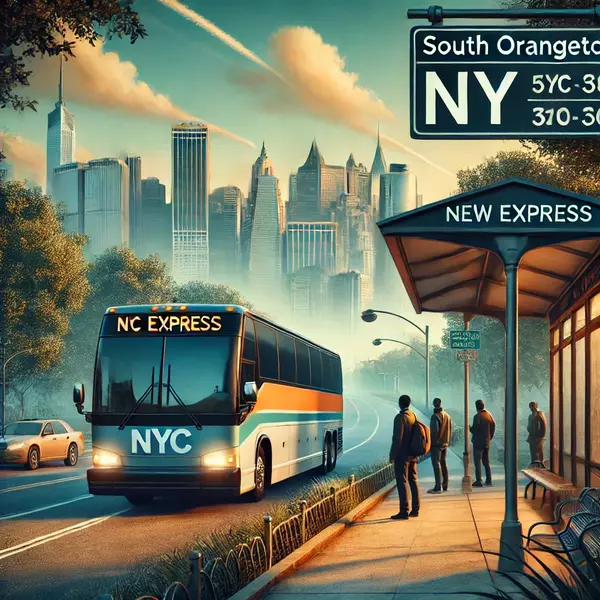History of Piermont, NY: From Industrial Hub to Scenic Village

Piermont, New York, is a small village with a rich history that reflects the broader story of the Hudson River Valley. Nestled along the western shore of the Hudson River in Rockland County, Piermont has evolved over the centuries from a bustling industrial center to a quaint riverside community known for its scenic beauty and vibrant arts scene. This transformation tells a story of adaptation and resilience, shaped by the people and events that have made Piermont what it is today.
Early Beginnings: A Native American Settlement
Before European settlers arrived, the area that is now Piermont was inhabited by the indigenous Lenape people. The Lenape were known for their fishing, hunting, and farming skills, and they thrived along the fertile banks of the Hudson River. The river provided an abundant source of fish, while the surrounding forests offered ample hunting grounds. The first European settlers, primarily Dutch and English, arrived in the 17th century, drawn by the region's natural resources and strategic location.
The Birth of Piermont: The Erie Railroad Era
Piermont began to take shape as a village in the early 19th century, largely due to the construction of the Erie Railroad. In 1839, Piermont was selected as the eastern terminus of the Erie Railroad, which was the first major transportation link between the Atlantic seaboard and the interior of the United States. The railroad brought significant economic activity to the area, and Piermont quickly grew into a bustling industrial hub. A long pier, extending over a mile into the Hudson River, was constructed to accommodate the transfer of goods and passengers between the railroad and steamships. This pier, which gave the village its name, became a vital part of the transportation network and contributed to Piermont's growth and prosperity.
Industrial Growth and Economic Change
Throughout the 19th century, Piermont's economy was driven by its role as a transportation and manufacturing center. The village was home to several mills and factories, including the Piermont Paper Company, which was one of the largest employers in the area. The industrial activity attracted a diverse workforce, including many immigrants, and contributed to the growth of a vibrant, multicultural community.
However, as the 19th century came to a close, changes in transportation technology and industry led to a decline in Piermont's industrial base. The completion of a more direct railroad route to New York City reduced Piermont's significance as a transportation hub, and many of its factories and mills began to close or relocate. By the early 20th century, Piermont had transitioned from a bustling industrial center to a quieter residential community.
World War II and the Camp Shanks Connection
Piermont played a notable role during World War II due to its proximity to Camp Shanks, a large military camp located in nearby Orangetown. Camp Shanks was the largest embarkation camp in the United States, serving as the final stop for soldiers before they were deployed to Europe. Over 1.3 million troops passed through Camp Shanks, and many of them spent time in Piermont, enjoying the village's amenities and natural beauty before heading overseas. The village's proximity to Camp Shanks brought a temporary surge of activity and economic boost during the war years.
Post-War Decline and Revitalization
After World War II, Piermont experienced a period of decline, as many of its remaining industries closed and the population dwindled. However, the latter half of the 20th century saw a resurgence in Piermont's fortunes, driven by a renewed appreciation for its scenic location and historic charm. The village began to attract artists, writers, and professionals seeking a quieter, more picturesque place to live and work, leading to a period of revitalization.
Piermont Today: A Vibrant and Scenic Community
Today, Piermont is known for its picturesque beauty, historic character, and vibrant arts scene. The long pier that once served as a transportation hub is now a popular destination for residents and visitors alike, offering stunning views of the Hudson River and the surrounding landscape. The village is home to numerous galleries, boutiques, and restaurants, reflecting its transformation into a hub for the arts and culture.
Piermont's commitment to preserving its historic character while embracing modern amenities has made it a desirable place to live and visit. The village's waterfront, parks, and walking trails provide ample opportunities for outdoor recreation, while its community events and festivals foster a strong sense of community spirit.
Conclusion
The history of Piermont, NY, is a story of transformation and resilience. From its early days as a Native American settlement to its role as an industrial hub and its later rebirth as a scenic village, Piermont has continually adapted to changing times and circumstances. Today, it stands as a testament to the enduring appeal of small-town life, offering a unique blend of history, culture, and natural beauty that continues to draw people to its shores.
Would you like an image to go along with this historical overview?
Categories
Recent Posts










GET MORE INFORMATION

Agent | License ID: 10401364161, 2298786

